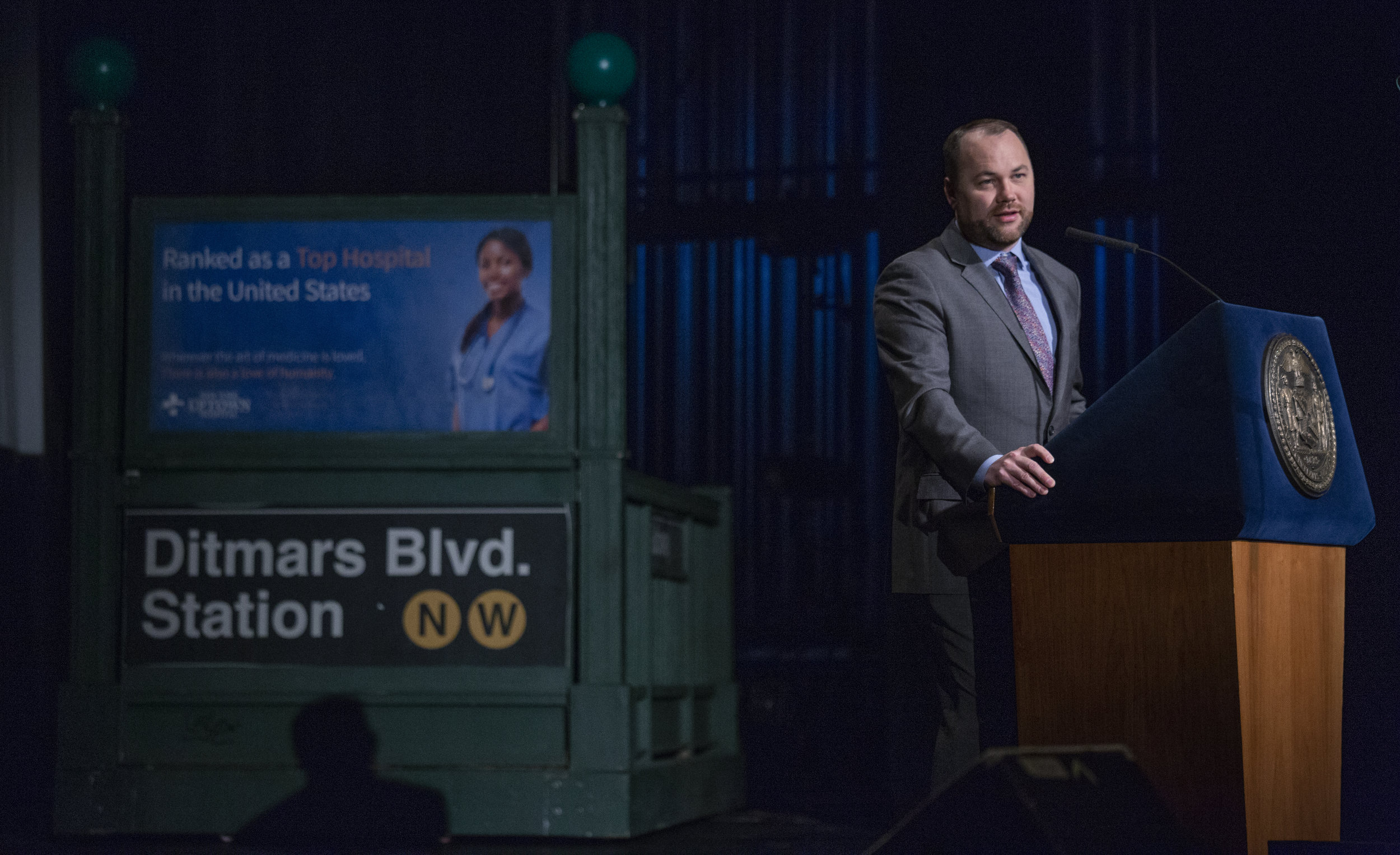Corey Johnson Put These 5 Queens Transit Problems on Blast Yesterday
/City Council Speaker Corey Johnson delivers his first State of the City Address in front of an Astoria subway station prop at LaGuardia Community College. Photo via the City Council/Flickr.
By Jonathan Sperling
UPDATE [4:20 P.M.] Friends of the BQX, a group that advocates for the streetcar plan, sent a statement responding to BQX criticism in Johnson’s report.
________
“Let it go.”
That was Council Speaker Corey Johnson’s transit message to New York state during his first-ever State of the City address on Tuesday. Johnson’s speech outlined an ambitious plan to transfer control of the MTA’s crumbling transit system from the state to the city and targeted several specific transportation problems.
Johnson’s district is concentrated on Manhattan’s west side, but the 104-page report he released along with the speech takes aim at Queens transit woes as part of the “Big Apple Transit” (BAT) revolution. The report is titled “Let’s Go — A Case for Municipal Control and a Comprehensive Transportation Vision for the Five Boroughs.”
Here are five of the Queens-specific transit issues and ideas Johnson highlighted in the report:
Eastern Queens Severely Needs Subway Service
Johnson’s report notes that New York City’s infamous master builder Robert Moses redirected funds from mass transit in order to build more highways and bridges even though he certainly controlled enough Triborough Bridge and Tunnel Authority funding to pay for subway service to Eastern Queens. Currently, large swaths of the area are without subway service, including St. Albans, Rosedale, Springfield Gardens, Queens Village, Hollis and Bayside, among other neighborhoods.
The LIRR’s Atlantic Ticket Program Doesn’t Sufficiently Serve Southeast Queens
The Atlantic Ticket pilot program, which offers commuters a discounted Long Island Rail Road fare of $5 for trips between Southeast Queens and Brooklyn’s Atlantic Terminal isn’t doing enough, Johnson said. A discount for Manhattan-bound commuters, as well as free transfers to subway or bus service outside of a $60 joint LIRR/NYCT weekly pass, should be offered, Johnson says.
The Brooklyn-Queens Connector Is Too Expensive
The proposed Brooklyn-Queens Connector (BQX), a streetcar that would link Astoria, Queensbridge and Long Island City with Brooklyn, is wildly more expensive than a similar bus route, according to Johnson’s report. The BQX is estimated to cost $2.7 billion to build and $30 million to operate, while a new Select Bus Service line servicing the same route would cost just $1.9 million to operate. “Construction costs for SBS routes range between $7 million and $27 million, which means that even at its highest, capital construction costs for SBS would amount to about one percent of the total cost of building the BQX, all while providing about the same added capacity to the system,” Johnson’s report states.
Friends of the BQX, a non-profit organization in support of the streetcar, responded to Johnson’s plan in a statement sent to the Eagle.
"The BQX will be the most utilized system of its kind in the country. But it's clear that the corridor, which is expected to house 58 million more square feet of commercial space and 45,000 more jobs over the next decade, will only reach its potential with a light rail featuring a dedicated right of way and MTA (or BAT) fare integration,” Friends of the BQX Executive Director Jessica Schumer said. “We agree with Speaker Johnson: it's time for the city to take more control of its transit destiny."
Cycling Is Growing In Queens
Between 2010 and 2015, the number of daily bike commuters in Queens grew by 59 percent, to nearly 6,000 people, according to a city study. Cyclists overall are more likely to be foreign-born than the general NYC population. However, according to the Department of Transportation, only 3 percent of all trips taken by New Yorkers in 2017 were taken by bike, a problem that could be solved by increased bike infrastructure.
Truck Routes Disproportionately Affect The Health of Southeast Queens
Truck routes send truck traffic and diesel buses primarily through Southeast Queens, as well as the South Bronx and North Brooklyn, due in part to their proximity to the Gowanus Parkway, Brooklyn-Queens Expressway and Long Island Expressway. The MTA also operates 28 bus depots across the five boroughs, 75 percent of which are located in communities of color. These factors have combined to cause, “acute and harmful impacts on air quality and health in these neighborhoods,” according to Johnson’s report.




